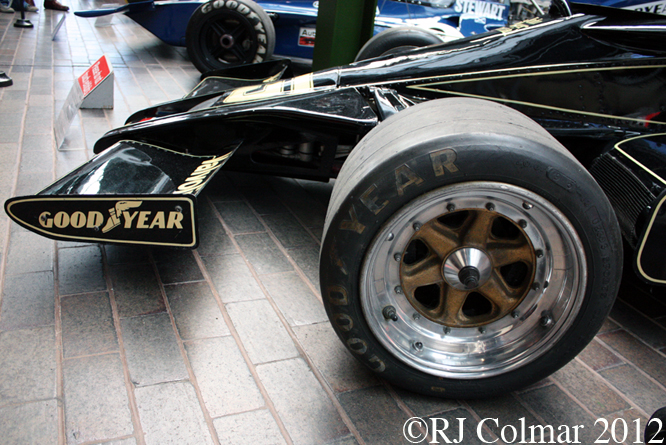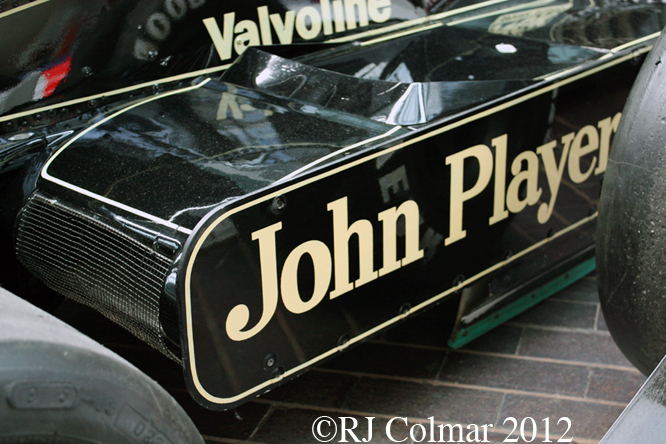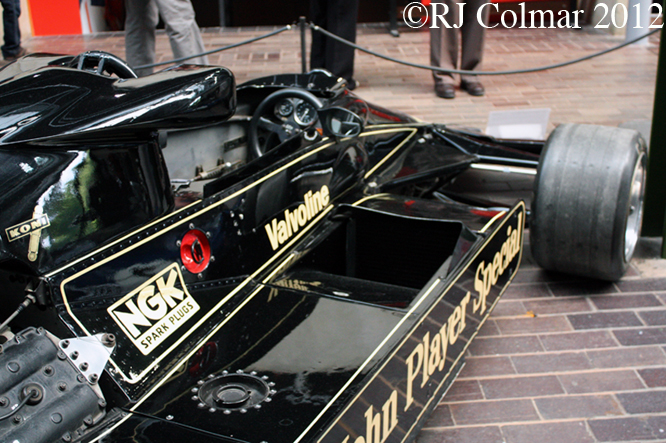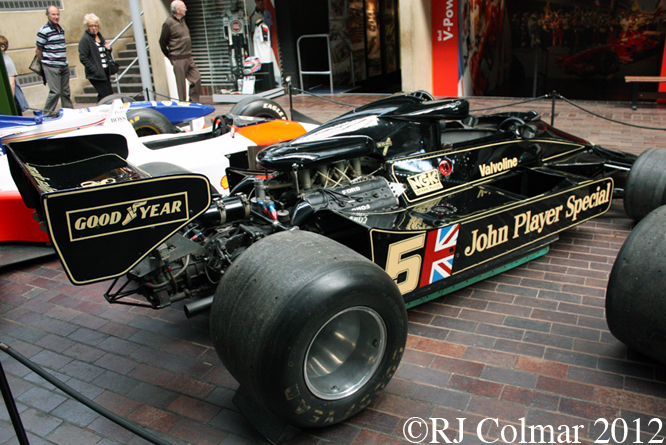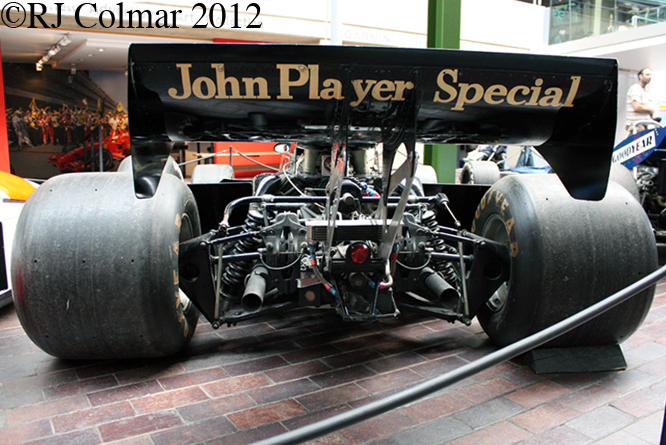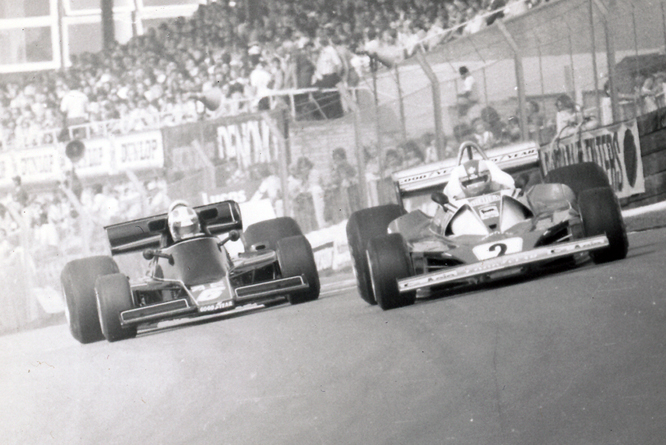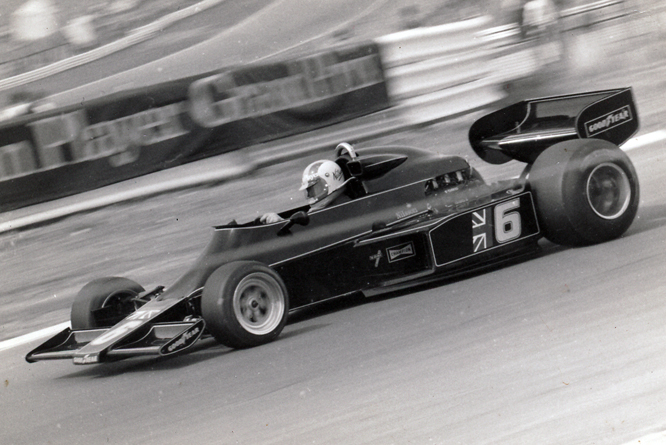After the mixed fortunes of the Lotus 76 with it’s twin wings and electric clutch and the Lotus 77 with it’s fully adjustable suspension Colin Chapman introduced an aerodynamic innovation for the Lotus 78 featured today.
Like the ’77 the Lotus 78 was built around a narrow monocoque with an oil radiator in the nose,
but with much larger sidepods than any Grand Prix car seen before.
The front wings were used, in conjunction with the rear wing, to trim the aerodynamic balance of the car.
Using an idea first modeled at BRM by Tony Rudd and Peter Wright the side pods closely resembled the upturned inner wing of a de Havilland Mosquito which Chapman had studied and written a detailed account of.
Tony Rudd and Peter Wright joined Ralph Bellamy and Martin Ogilvie at Lotus to design the car and its side pods which produced prodigious down force to increase the speed at which it could go around corners without loosing grip.
While conducting wind tunnel tests for the Lotus 78 design at Imperial College London Peter Wright found that as predicted by Bernoulli’s principle of fluid dynamics which states that the flow speed of an ideal fluid with no friction will increase simultaneously with a decrease in pressure. Meaning in the case of the Lotus 78 the faster it went the more down force was generated by the side pods and so the better the car stuck to the road.
The Lotus 78’s, known as John Player Special III’s by Lotus and their sponsors, were ready to race midway through 1976, but Chapman wisely vetoed their use until 1977 so as not to give rival teams the chance to figure out what Chapman and his team had come up with and copy during the off season.
Starting the 1977 season Lotus had a huge advantage with the 78’s affording Mario Andretti 5 victories and his team mate Gunnar Nilsson with one more. However the unreliability of the Nicholson McLaren built motors played into the hands of Niki Lauda who, having more or less fully recovered from his near fatal accident in 1976, took only three victories and a string of podium places to claim the championship.
The car seen here at the National Motor Museum, Beaulieu is chassis #78/R2 which Mario Andretti used to start the 1977 season before it was entrusted to Gunnar Nilsson who won the Belgian Grand Prix driving it. In 1978 before the even more radical Lotus 79 was introduced, Lotus returnee, Ronnie Peterson drove the car and snatched a thrilling victory with one lap to go in South Africa.
Mexican Hector Rebaque acquired the car at the end of 1978 season and used it along Lotus 78/R1 which he had been using since the beginning of the 1978 season.
Sadly Ronnie Peterson lost his life after an accident at the start of the 1978 Italian GP where he was driving the back up Lotus #78/R3.
Thanks for joining me on this “Original Wing Car” edition of “Gettin’ a li’l psycho on tyres”, I hope you will join me again tomorrow when, thanks to some photographs from Geoffrey Horton, I’ll be looking at some of the vehicles in attendance at the Marin Samoma Concour’s d’Elegance. Don’t forget to come back now !



